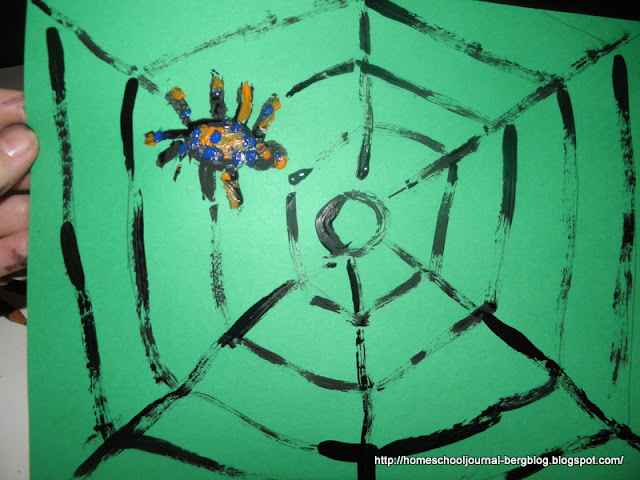St. Jerome in His Study (1514), Albrecht Durer
 |
| St. Jerome in His Study. 1514. Engraving There is so much in this piece to talk about. We talked about symbolism. We talked about perspective in the room. |
 |
| worksheet from Homeschool Journey's Renaissance History Portfolio |
Here is "an unfancy, unscary introduction to drawing in perspective". We talked a bit about engraving.
"Engraving is the practice of incising a design on to a hard, usually flat surface, by cutting grooves into it. The result may be a decorated object in itself is engraved, or may provide an intaglio printing plate, for printing images on paper as prints or illustrations; these images are also called engravings." (Wikipedia)
We looked at the illustrations here of how intaglio printing is done, but I thought they might understand it better if we actually made an intaglio print ourselves.
A pencil carves a design in the foil over clay...
which make grooves to hold the paint.
Wipe off any extra paint with a damp cloth, leaving just the paint in the grooves.
This is called an Intaglio Print.
Paint your background, (in this case, a web spun by the spider) and any other decorations you would like (such as on the spider).
Since this is our last week of looking at the work of Durer, we compared and contrasted his works.
We talked about them in terms of mediums, themes, style. We compared the mediums of watercolors, tempera on linen, pen and ink, intaglio printing and woodcuts. Some of his themes were religious, some were not.









